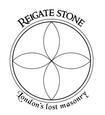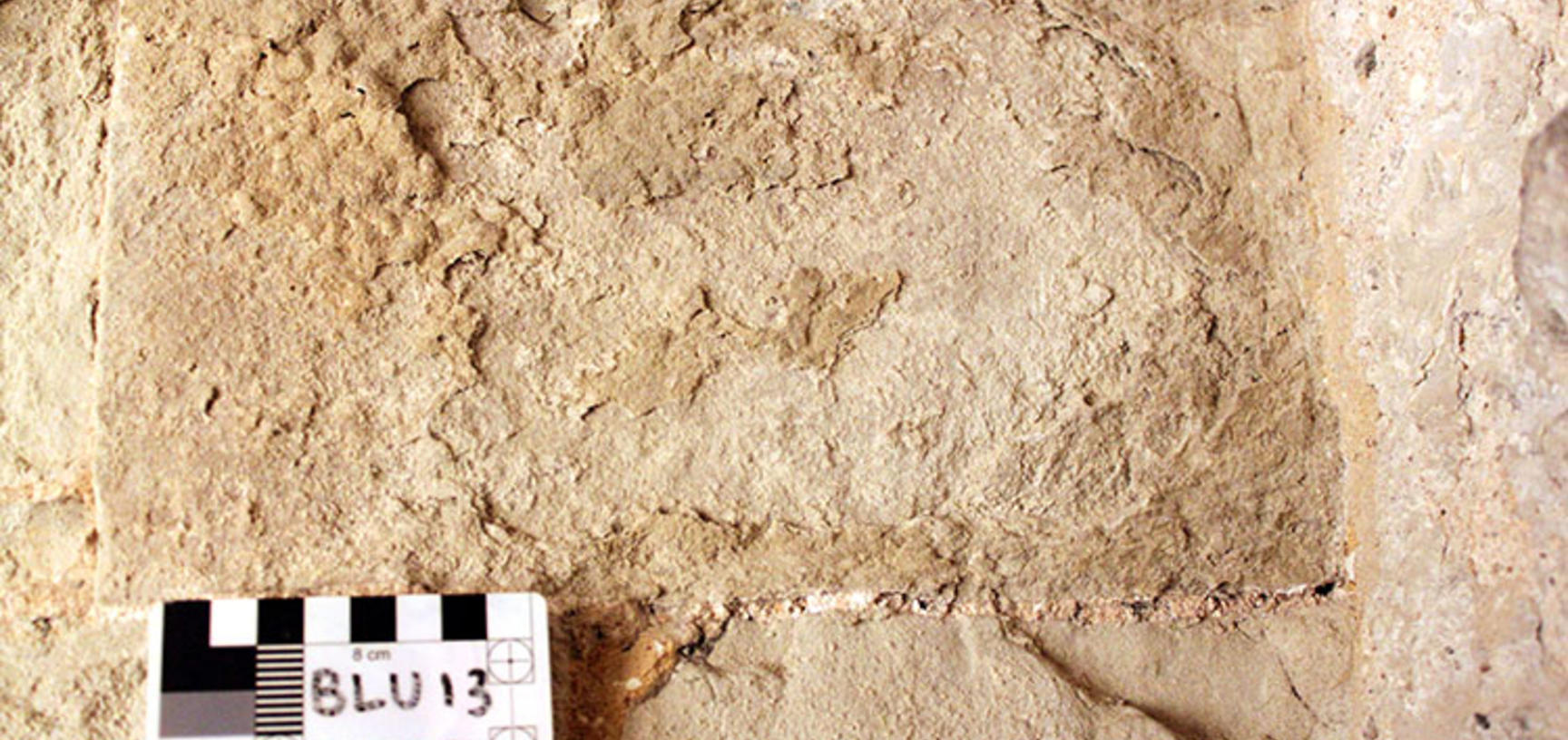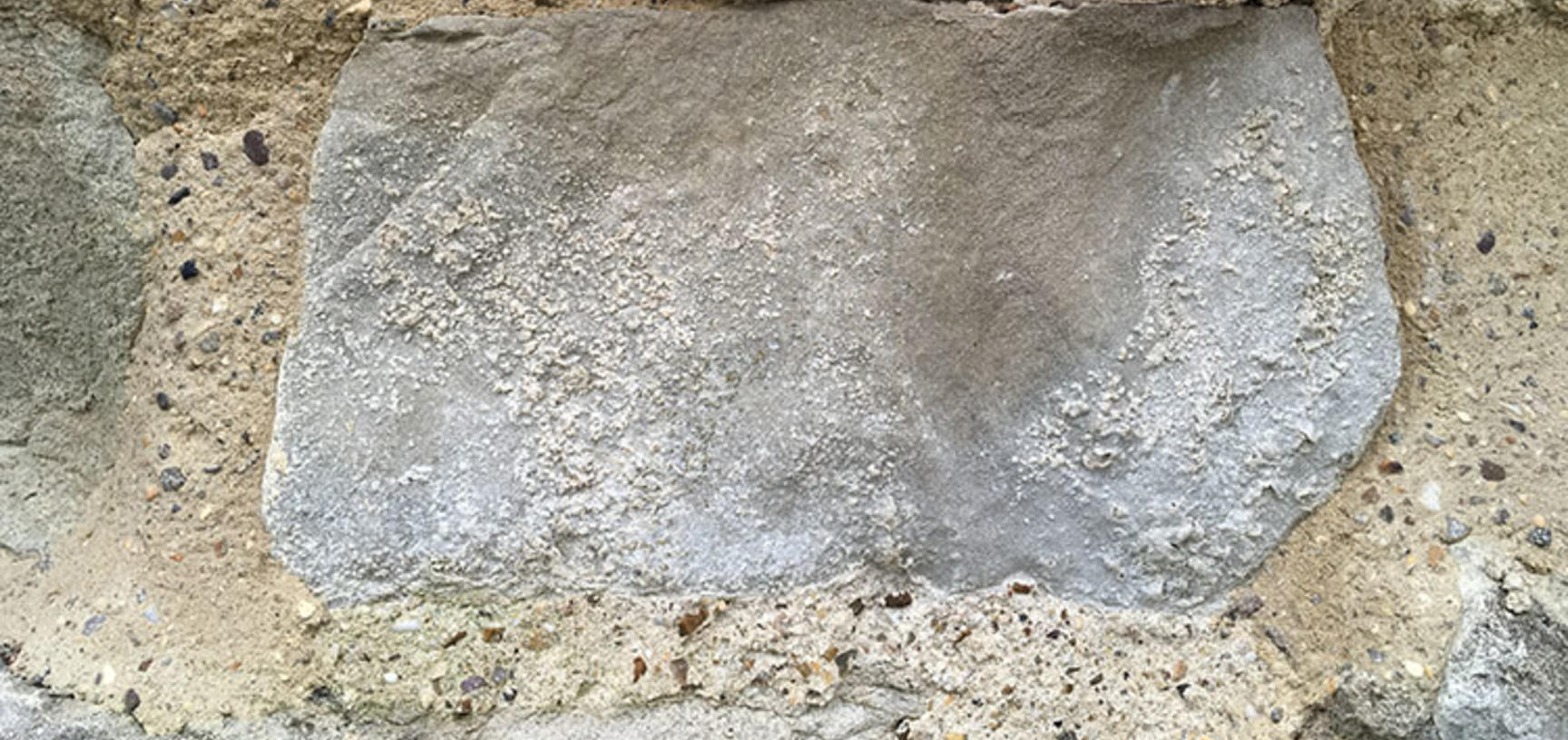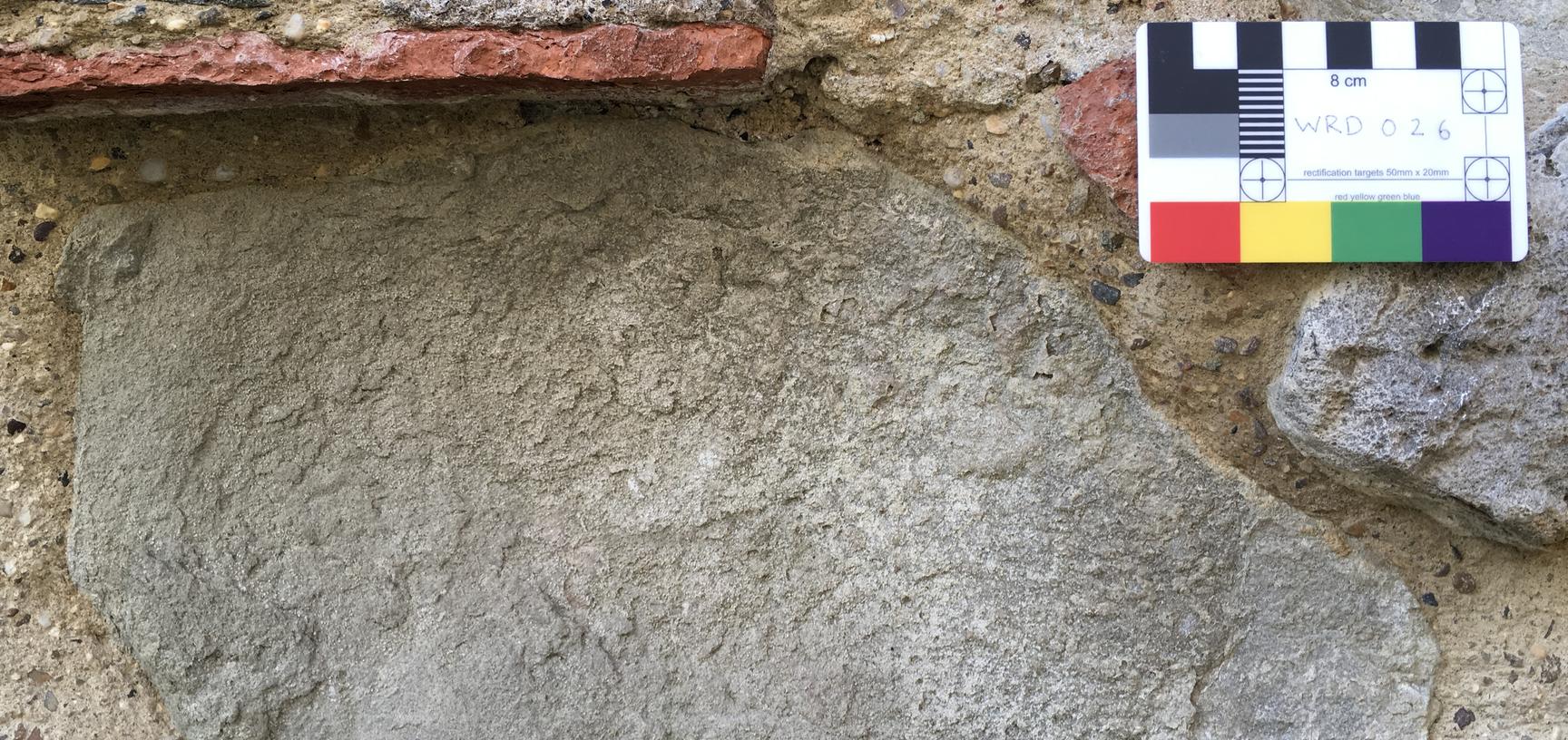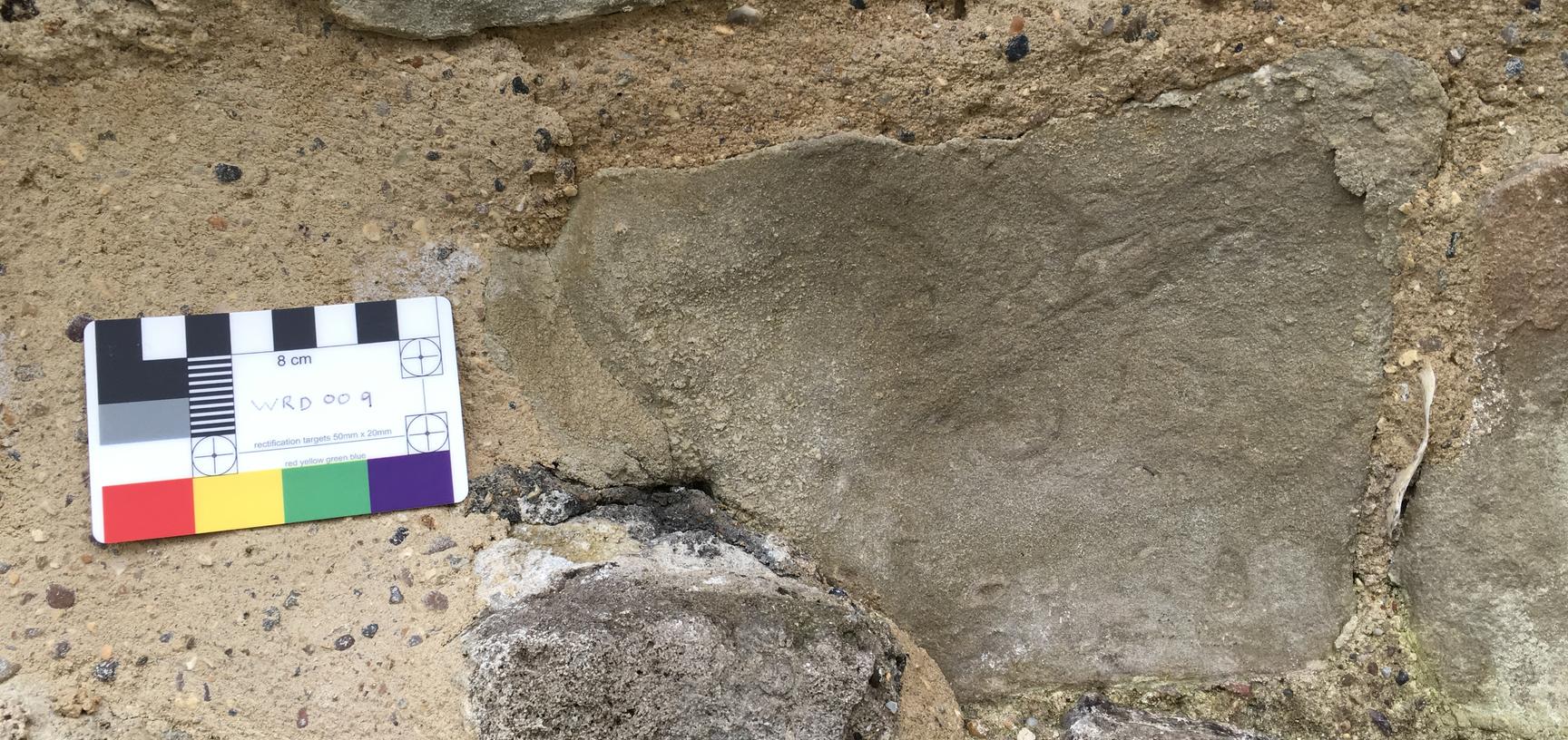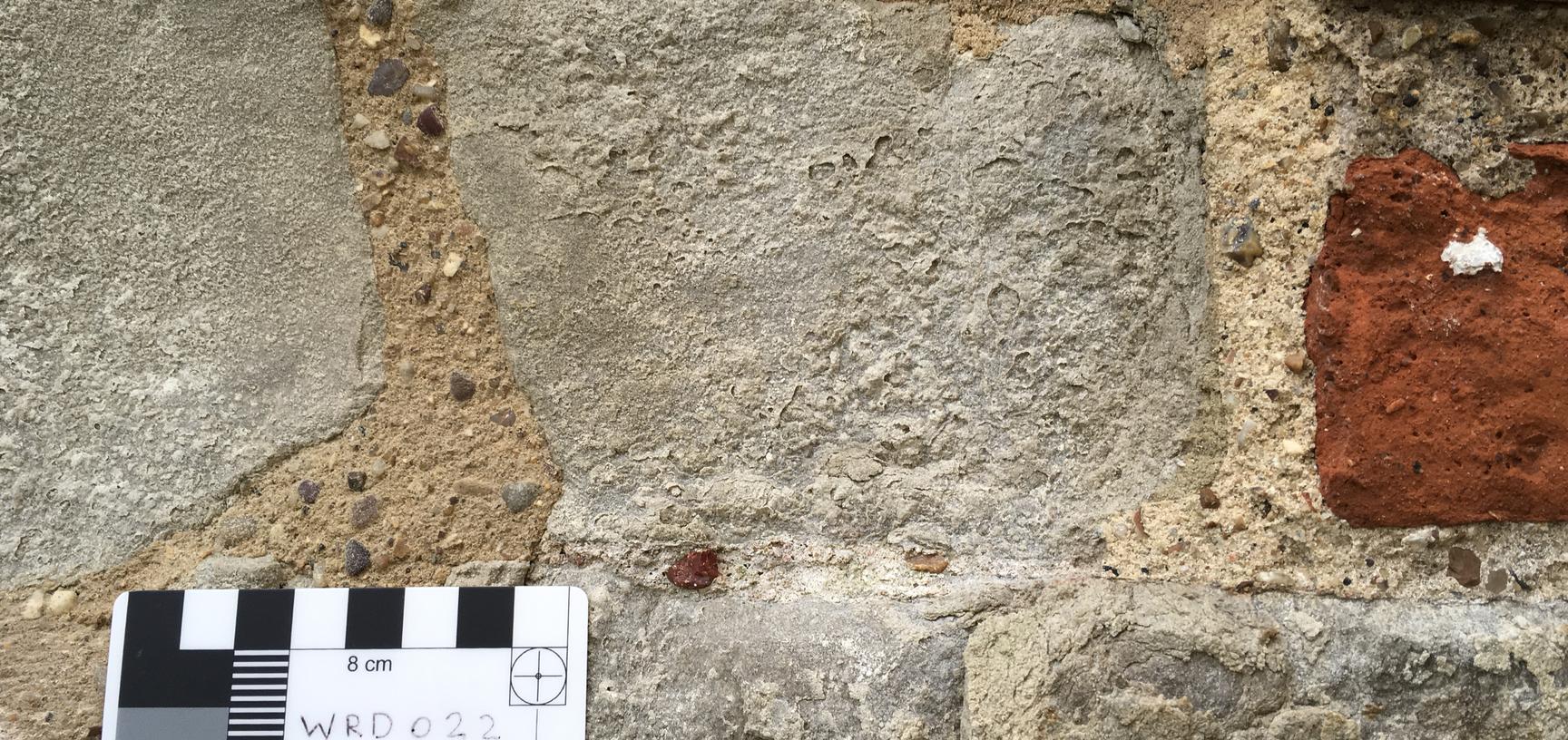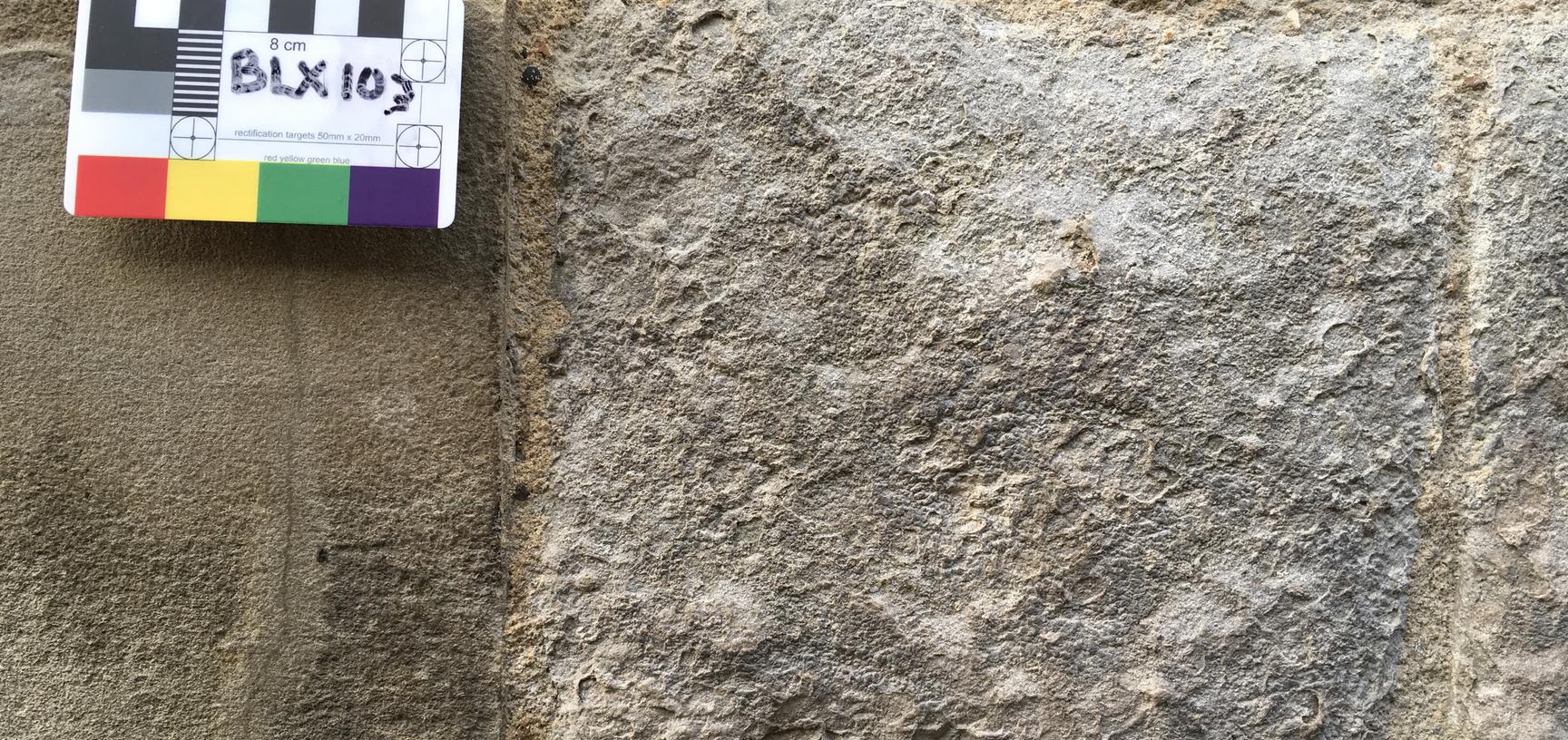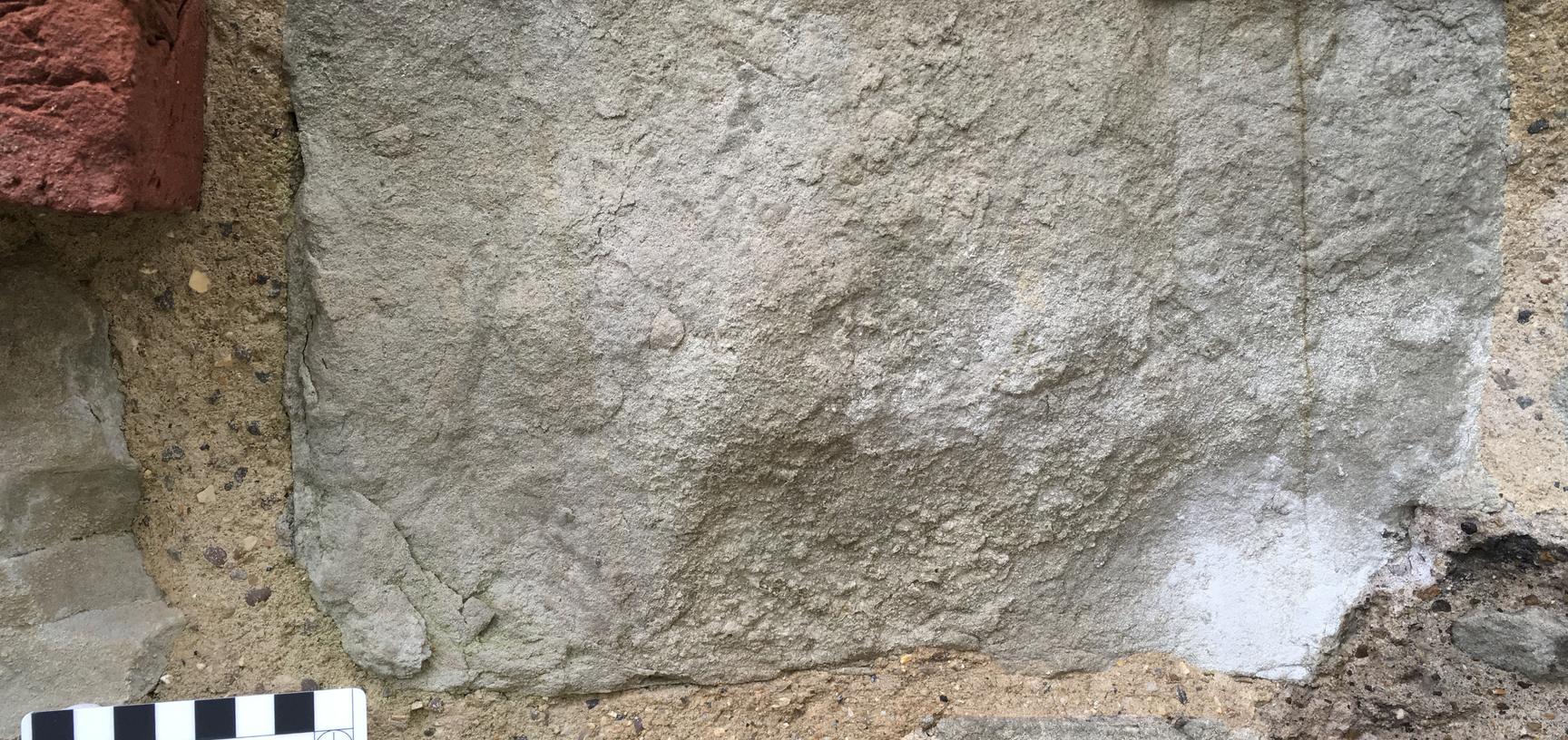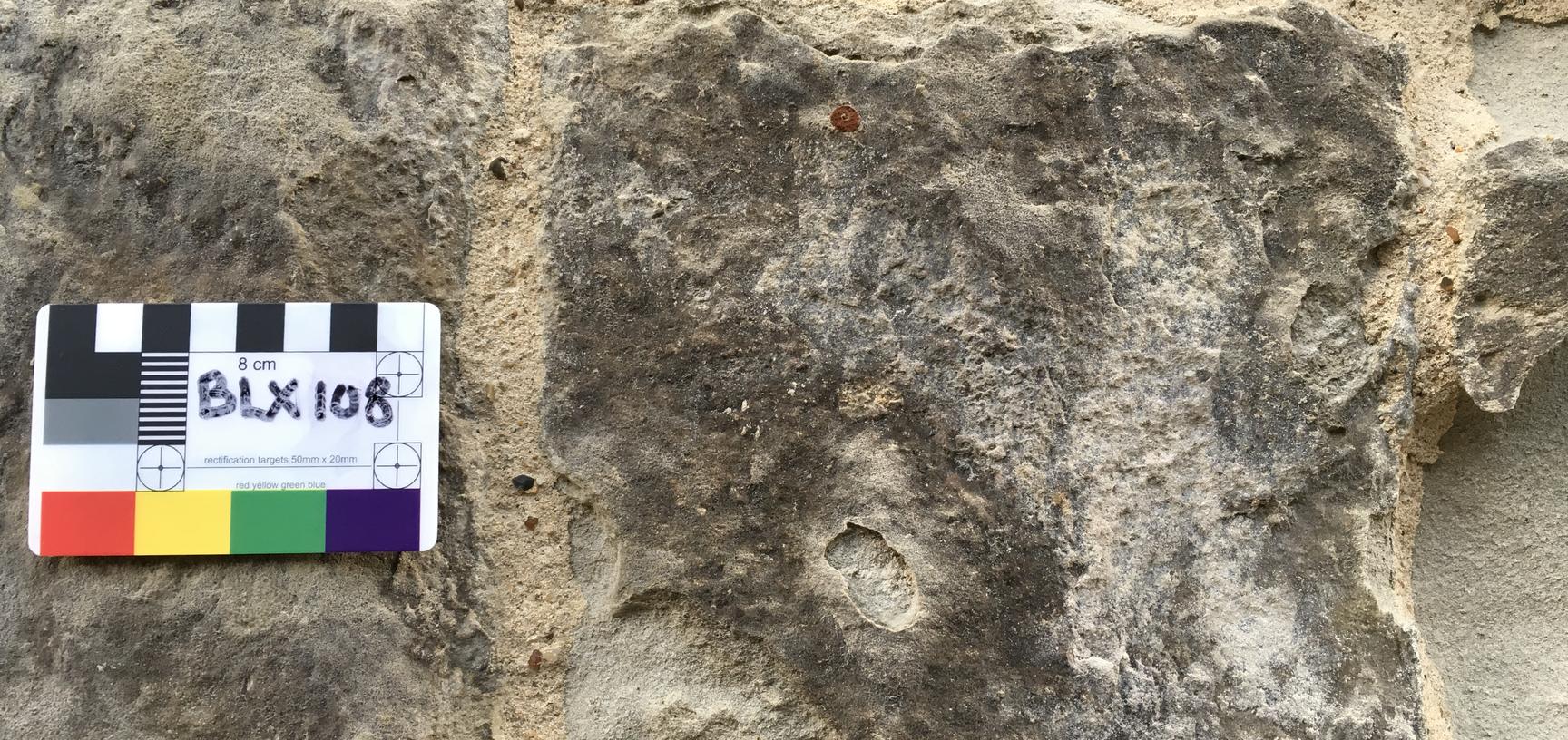Blistering
Occurrence and appearance
Commonly affects salt crusts, or other thin films, but occasionally Reigate Stone fabric is prone to blistering.
This form of detachment is likely to indicate salt driven decay.
Described in the ICOMOS glossary as “separated, air-filled, raised hemispherical elevations”. The size of blisters can range and there is likely to be visual overlap with flaking phenomena. A useful distinction between the two can be made based on their relative isolation, with blisters occurring separately and flakes often overlapping.
Condition assessment
| Score |
Coverage (affected units in an area) |
Severity (worst affected unit) |
|---|---|---|
| 1 |
There is no blistering in this area of masonry. |
Isolated parts of the stone show signs of blistering, but the shape and volume of the stone is largely intact. The detachment does not appear to be recent, or if it is recent it is insignificant. |
| 2 |
Isolated stones are showing signs of blistering. |
There are signs of blistering across the stone surface, resulting in noticeable erosion, but the surface is sound, and the process does not appear to be aggressively active. |
| 3 |
Up to half of the stones in this area of masonry are showing signs of blistering. |
There are signs of active, aggressive blistering in parts of the stone. The stone surface in these areas lacks cohesion. This process is resulting in active loss of material. |
| 4 |
More than half of the stones in this area of masonry are showing signs of blistering. |
There are signs of active, aggressive blistering across much of the stone surface, which lacks cohesion. There may be visible salt crystals. This process is resulting in active loss of material. |
Previous page (Scaling)
Next page (Definitions)

